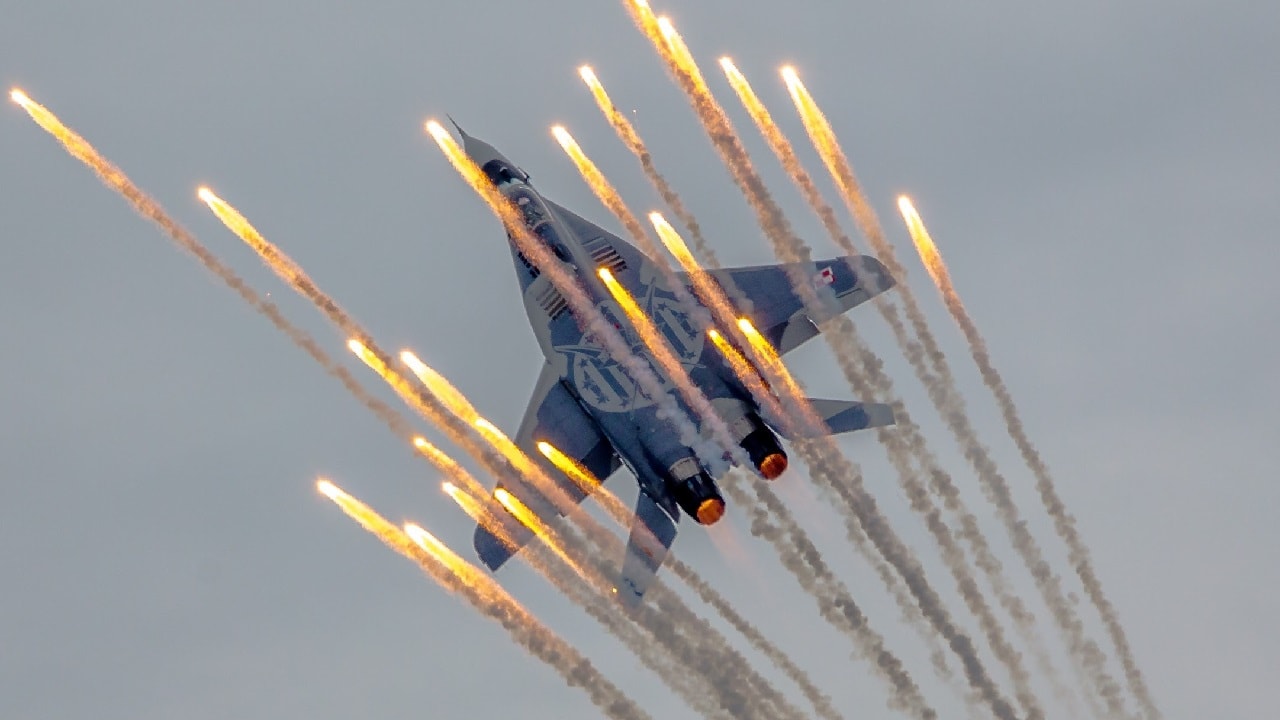Meet the MiG-29: As a well-known and somewhat famous Cold War Soviet platform, the MiG-29 was likely designed and built in the 1970s as a counterpart to the then-emerging U.S. Air Force F-15 and F-16. The aircraft, which can hit high speeds of Mach 2.3 comparable to an F-22, evolved into what could be called a high-speed bomb truck. First emerging in 1983, the MiG-29 traveled with 8,800 pounds of ordnance with seven hard points.
Specs on the MiG-29, published in 2011 by Airforce-technology, show it primarily carries rockets and surface-to-air weapons while possibly packing some air-to-air armament. Alongside this payload, the specs also say that the MiG-29 can carry six 1,400-pound bombs to attack from the sky.
Perhaps upgrades in subsequent years enabled this 1980s-era fighter jet to drop precision-guided bombs, however, that option may not have been available when the aircraft first took off in 1977. The MiG-29’s seven hard points are actually considerably less than the Su-27 fighter, which operates with 10-hardpoints and flies at Mach 2.3 speed, roughly equivalent between the aircraft. Both the Su-27 and MiG-29 aircraft are also comparable with a thrust-to-weight ratio of 1.09.
Comrades in the Sky
Given these statistics, it appears the much heavier payload capacity of the Su-27 might make it the favored aircraft, something which would make sense given the Su-27 was introduced two years after the MiG-29 in 1983. The largest margin of difference between the two fighters, however, may be in the realm of radar cross-section, given the configurations.
The Su-27 has a much more rounded and horizontal fuselage with the exhaust vents not protruding, something which increases the stealth properties of the aircraft. Electromagnetic pings from radar do not, in this case, offer a high-fidelity return rendering. Radar signals cannot “bounce off” flat surfaces to effectively determine the size, shape, and speed of the aircraft.
The MiG-29, by contrast, has several rectangular-like protruding structures on the back of the aircraft, something much more likely to give radar “pings” something to bounce off of and return to deliver a “rendering” of the aircraft. These differences in external configuration might explain why the Su-27 fuselage wound up evolving into the Su-35, as both airframes appear to succeed in lowering the fighter jet’s radar signature with sloped, slightly blended wing-body configurations.
As for the MiG-29’s ability to rival the F-15 and F-16 today, that would seem unlikely unless Russia has been able to sustain the airframe, and to an even greater extent, upgrade the weapons, computing, and avionics. The F-15, for example, now has an ultra-high-speed Advanced Display Core Processor II able to perform billions of calculations per second, AESA radar, and new generations of avionics, communications, and weapons technology.
Sustainment and modernization are similar to the F-16, which has not only received a Service Life Extension Program but also has been configured into a newer, more-advanced “v” variant for allied customers.
Why the MiG-29 Will Keep Going
Lockheed has even built an advanced F-21 for the Indian military, a special new F-16 variant tailored specifically for India. While the F-15 and F-16, including the newly built F-15EX, are fourth-generation airframes. The U.S. is doing what it can to extend the utility and service life of the airframe, given that they could still be effective and relevant in many combat environments and present a counter for China’s J-10 and Russia’s MiG-29.
Kris Osborn is the Military Affairs Editor of 19FortyFive and President of Warrior Maven – Center for Military Modernization. Osborn previously served at the Pentagon as a Highly Qualified Expert with the Office of the Assistant Secretary of the Army—Acquisition, Logistics & Technology. Osborn has also worked as an anchor and on-air military specialist at national TV networks. He has appeared as a guest military expert on Fox News, MSNBC, The Military Channel, and The History Channel. He also has a Masters Degree in Comparative Literature from Columbia University.

